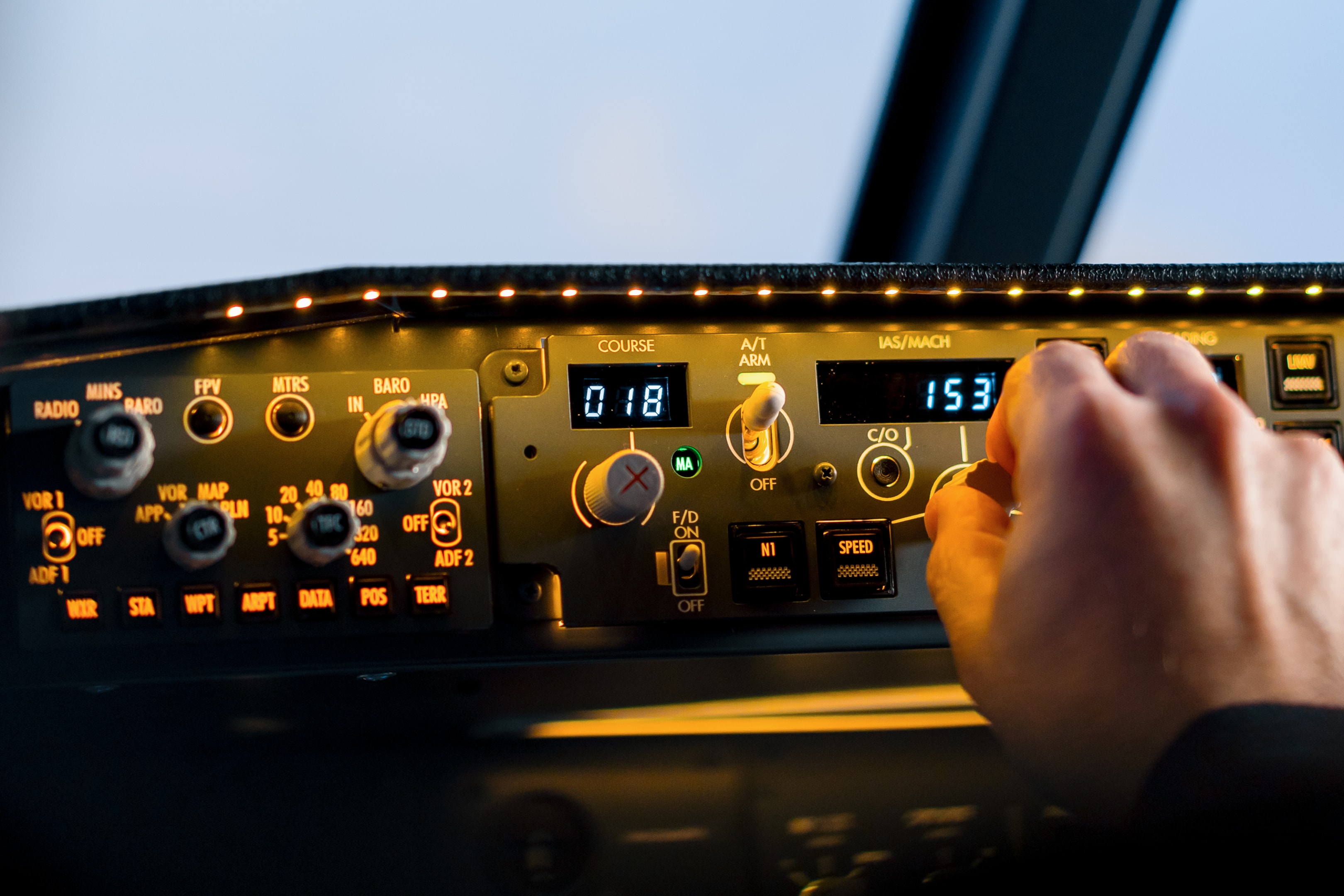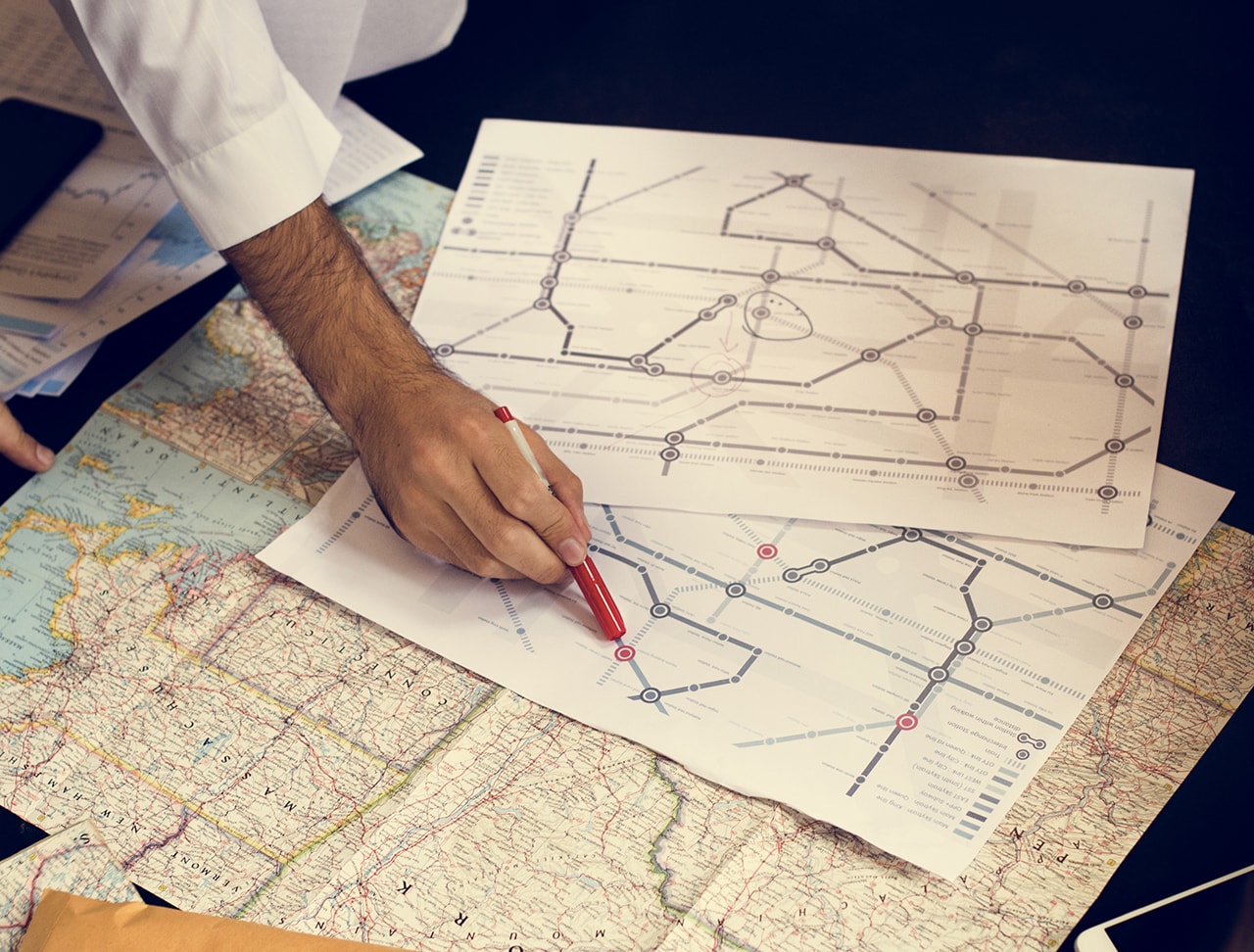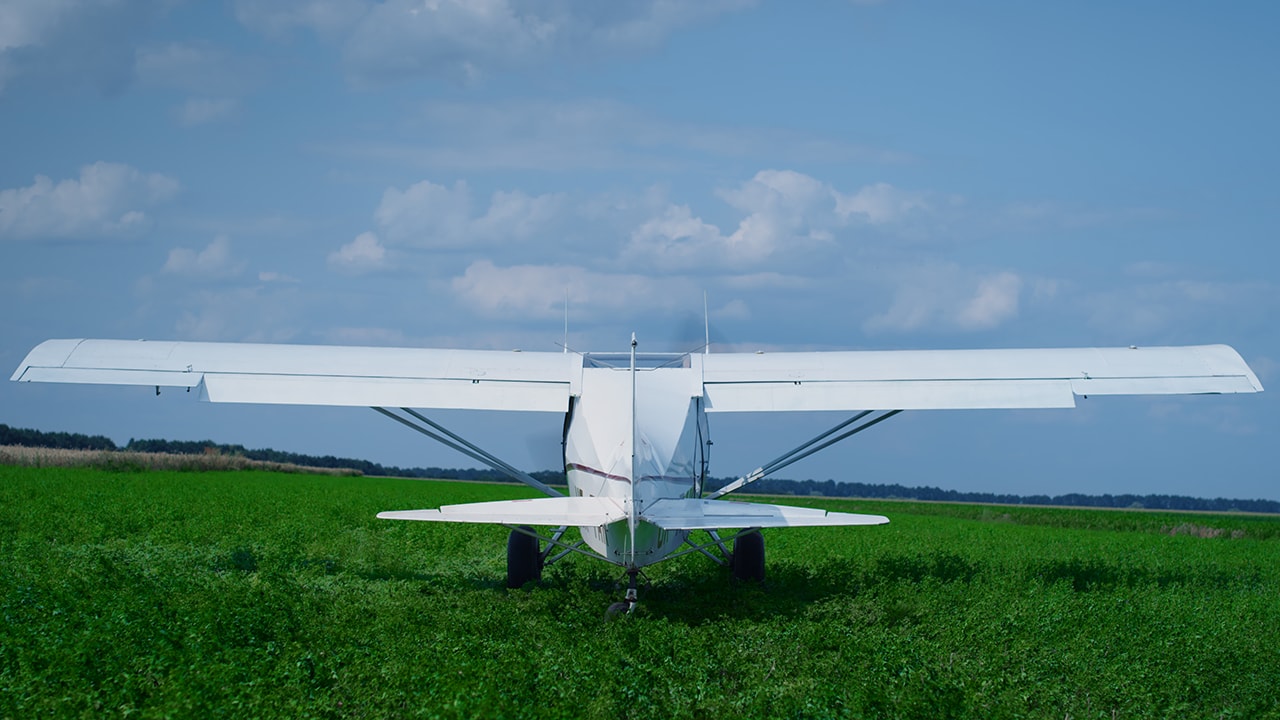How Do Variations in Temperature Affect the Altimeter?
Sep 19, 2024
When flying or hiking, temperature affects altimeter accuracy, so you need to know.
Temperature changes can cause big errors, indicated altitude readings and your trip could be at risk.
Get the knowledge to mitigate these effects, how to read an altimeter and read on to learn what you need to know to feel more confident and perform better in the air or on the trails!
What is Altitude and How is it Measured?
Altitude is the height of an object or point above sea level or ground level and is important for safety and navigation in many activities. Altimeter Setting Explained is another essential aspect of understanding how altitude is measured accurately, especially in aviation
Knowing how to measure altitude accurately will give you more confidence flying or hiking.
There are several ways to measure altitude, radar, GPS and barometric altimeters.
Each of these will give you valuable data to determine your elevation so you know where you are and how you are performing.
There is more than one type of altitude. True altitude is height above mean sea level (MSL), indicated altitude is what your altimeter reads, and absolute altitude is how high you are above ground level (AGL).
An aircraft's true altitude reflects the vertical distance above mean sea level and can be affected by factors such as temperature differences, which may impact its accuracy. It differs from flight level altitude, which is based on standard pressure settings, and GPS altitude, which is derived from satellite data.
Understanding this will help you and make better decisions on your adventures.
Altitude is the height above sea level or ground level and is key to safety and navigation in the outdoors. Knowing your altitude gives you more confidence as you head out.
With tools like radar, GPS and barometric altimeters you can gather valuable data on your elevation.
Knowing the difference between true altitude, indicated altitude and absolute altitude means you can make informed decisions based on your situation and enjoy and be safer flying or hiking.
This awareness will get you closer to your adventure goals!
Types of Altitude
Types of Altitude: Pressure Altitude

You need to know the different types of altitude for navigation and safety in your adventures.
Each serves a purpose and contributes to your overall awareness of your elevation to your environment.
True altitude is height above mean sea level (MSL) a clear benchmark for elevation. It’s critical for accurate navigation especially in aviation and hiking.
Indicated altitude is what’s showing on your altimeter. This is important but can vary with atmospheric conditions that’s why you need to understand pressure and density altitude.
Pressure altitude is the indicated altitude when your altimeter is set to 29.92 inHg. Barometric altitude which is affected by ambient temperature can have discrepancies between actual and indicated altitude of an aircraft.
Temperature variations can have big differences, so you need to account for these. Density altitude is the pressure altitude adjusted for nonstandard temperature variations.
Absolute altitude is like true altitude measures how high you are above ground level (AGL) another perspective for safe navigation and decision making.
Types of Altitude: Density Altitude
Density altitude is a critical concept in aviation, as it directly impacts an aircraft’s performance and altitude readings. Essentially, density altitude is the altitude at which the air density matches the air density at sea level under standard atmospheric conditions. This measurement takes into account air pressure, temperature, and humidity, making it a comprehensive indicator of flight conditions.
When air pressure decreases or temperature increases, air density decreases, leading to a higher density altitude. This can significantly affect an aircraft’s performance, particularly during takeoff and landing. For instance, a high-density altitude means the air is less dense, resulting in a longer takeoff roll and a reduced climb rate. Conversely, a low-density altitude indicates denser air, which can shorten the takeoff roll and improve the climb rate.
Humidity also plays a role; as humidity increases, air density decreases, further elevating the density altitude. Pilots must be acutely aware of these factors, especially when flying in high-altitude or hot-weather conditions. Understanding density altitude is crucial for safe flight operations, as it helps pilots anticipate and adjust for changes in aircraft performance.
The Impact of Temperature on Altimeter Readings

Temperature plays a significant role in how altimeters function by influencing air density and atmospheric pressure.
Warm temperatures cause air density to drop, leading to the altimeter showing a lower altitude than true altitude. This means the airplane will actually fly higher than the altitude the altimeter is showing.
Conversely, when the air is colder, it becomes denser, which can result in your altimeter showing a higher indicated altitude than the actual true altitude. This means the airplane will actually fly lower than the altimeter says it is. Especially when flying in precision situations like instrument approaches, this can create extremely dangerous situations!
Environmental factors such as variations in temperature can cause discrepancies between indicated barometric altitude and true altitude, making it essential to understand these variations for accurate navigation and safety during your outdoor adventures.
Understanding this relationship not only helps in maintaining awareness of your surroundings but also ensures you can make informed decisions based on your elevation.
Additionally, the temperature lapse rate, or the rate at which temperature decreases with altitude, is typically about -2°C for every 1000 feet.
This knowledge can further enhance your understanding and help you handle elevation changes more effectively.
Practical Example of How Do Variations in Temperature Affect the Altimeter
When the air is colder, it becomes denser, meaning the air molecules are closer together. Because they are closer together, the pressure of the air at given altitudes changes more for a given change in altitude. Another way to say it, is that the altitude where a given air pressure (let's call it "X inHg) is found will be at a lower altitude (closer to the ground) in cold air than in warmer air.
When the air is warmer, it is less dense, meaning the air molecules are farther apart. The same number of air molecules are spread out over a greater difference in altitude. So, if you were to look for the altitude at which X inHg is located, you fill find it at a higher altitude than in cold air.
This all sounds very complicated. But it has very serious consequences for flying.
Let's say you're flying your airplane from an area of cold weather to an area of warm weather. As you pass the area of changing weather, you are working to stay at the altitude indicated on your altimeter. Let's say you happen to have the Kollsman window on your altimeter set for 30.00 inHg and you are flying at 5000 feet.
As you transition into the area of warmer weather the pressure gradient (rate of change of pressure at a given altitude) is going to be more spread out between low and high altitudes. As a result, the altitude where 30.00 inHg would be found by the altimeter is going to be higher than it was when you were flying in cold air. The altimeter will notice that you are now flying below the altitude where 30.00 inHg would be found. You are now in a higher-pressure zone. Even though you haven't done any climbing or descending yet, the altimeter will sense the increase in pressure and interpret that has a decrease in altitude. So, it will tell you that you are descending.
Because you are using the altimeter to maintain 5000 feet altitude, you adjust to the decrease in altitude indicated by the altimeter by climbing to reach 5000 feet indicated altitude. But in reality, you are now higher above the ground than you were before.
While flying a little higher might not sound like a big deal, it can have an effect on air traffic control's ability to keep you separated from other aircraft.
The bigger, and far more dangerous situation occurs in reverse.
When flying from an area of warmer weather to colder weather, all these factors happen in reverse. And the result is that you are, in the end, flying lower (closer to the ground) than you were in the warmer weather area. Obviously, this can create some significant safety issues especially if you are flying by instruments and in the clouds where you can't see the ground!
The old pilot adage used to warn against this danger is," High to low, look out below!" In other words, when flying from an area of higher temperature to lower temperature, be careful you still have enough altitude below you to remain safe!
The Impact of Hot Temperatures on Altimeter Readings
Hot temperatures can affect altimeter readings big time if you have a barometric altimeter. When it’s hot the air expands, causing the pressure of the air to drop, so the altimeter reads higher than the actual altitude. This is because altimeters are calibrated to a standard temperature of 15°C (59°F).
In hot conditions the air pressure drops, and you get a higher indicated altitude than the actual altitude. For example, if it’s 30°C (86°F) and the altimeter is set to 29.92 inHg the altimeter might read 1,000 feet higher than the true altitude. This can be very dangerous in high altitude or mountainous terrain where accurate altitude is critical.
To combat hot temperatures on altimeter readings pilots can use temperature correction charts or digital altimeters that take into account the actual temperature. Or use other navigation aids like GPS to verify the aircraft’s true altitude and fly safer.
How Air Pressure Affects True Altitude

Atmospheric pressure plays an essential role in aviation, decreasing as altitude increases.
This reduction can significantly impact how pilots interpret their altitude readings.
Temperature variations also occur as altitude changes, further complicating altitude calculations. As temperature and altitude increase, air density decreases, which affects altitude readings.
Understanding density altitude as a measurement adjusted for non-standard temperature variations is crucial for pilots to gauge the conditions their aircraft will encounter during flight.
When atmospheric conditions are non-standard, both pressure and temperature can lead to inaccuracies in the airplane’s indicated altitude.
These inaccuracies can result in misunderstandings of true altitude, which is crucial for safe flying and navigation.
It’s vital for pilots to be aware of these potential discrepancies.
Ultimately, understanding how air pressure and temperature influence the altimeter’s readings is key for effective flight planning.
By doing so, pilots can navigate with greater confidence and ensure safer journeys.
The Role of Humidity in Altimeter Readings

Humidity plays a significant role in altimeter readings, as it affects the air density and, consequently, the altimeter’s accuracy. Altimeters are calibrated to assume a standard atmospheric condition, which includes a specific humidity level. However, in reality, humidity levels can vary significantly, leading to errors in altimeter readings.
When the air is more humid than standard, the air density is lower, causing the altimeter to read higher than the actual altitude. Conversely, when the air is drier than standard, the air density is higher, causing the altimeter to read lower than the actual altitude.
To mitigate the effects of humidity on altimeter readings, pilots can use a correction factor, which takes into account the actual humidity level. This correction factor can be applied to the altimeter reading to obtain a more accurate estimate of the aircraft’s true altitude.
The Role of Wind in Altimeter Readings
Wind can also influence altimeter readings, particularly in aircraft using barometric altimeters. When the wind blows, it can cause changes in air pressure, which in turn affects the altimeter reading. For instance, a westward wind can decrease air pressure, resulting in a higher altimeter reading. Conversely, an eastward wind can increase air pressure, leading to a lower altimeter reading.
However, the impact of wind on altimeter readings is generally minor compared to the effects of temperature. Modern altimeters are designed to compensate for wind effects, ensuring more accurate readings.
In summary, both temperature and wind can affect altimeter readings, especially in aircraft with barometric altimeters. Understanding these factors is crucial for pilots to ensure safe flight operations. By using temperature correction charts, digital altimeters, and other navigation aids, pilots can achieve accurate altitude readings and enhance flight safety.
Calculating True Altitude
Calculating true altitude is essential for pilots to navigate accurately and safely.
The formula to determine true altitude is:
True Altitude = Indicated Altitude + (ISA Deviation × 4/1,000 × Indicated Altitude).
Example Calculation of True Altitude
Let’s say a pilot is flying at an indicated altitude of 5,000 feet and the ISA deviation is -10°C. To calculate the true altitude, we can use the formula:
Plugging in the numbers:
-
Indicated Altitude: 5,000 feet
-
ISA Deviation: -10°C
Now we calculate the adjustment:
-
ISA Deviation × 4/1,000 × Indicated Altitude = -10 × 4/1,000 × 5,000
-
This equals -200 feet.
Now, we can find the true altitude:
True Altitude = 5,000 + (-200)
True Altitude = 4,800 feet.
This calculation shows the importance of adjusting for temperature conditions, allowing the pilot to accurately maintain altitude, navigate effectively, and ensure safety throughout the flight
This equation considers the International Standard Atmosphere (ISA) conditions alongside the actual temperature, ensuring precise altitude readings.
Additionally, pilots can use advanced tools like radar or radio altimeters for measuring altitude, especially over water, allowing for even more accurate calculations in their journey.
Common Altimeter Errors and How to Avoid Them

Altimeter errors can arise from a variety of factors, including temperature variations, changes in air pressure, and instrument inaccuracies.
These errors can significantly impact a pilot's altitude readings, making it crucial to understand their causes.
To mitigate these issues, pilots should ensure they are using the correct altimeter setting.
Being aware of real-time changes in air pressure and temperature can help in making necessary adjustments, leading to more accurate altitude measures.
Additionally, relying on multiple sources of altitude information can further enhance navigation safety.
This practice helps pilots verify their readings, making it less likely that they will encounter unexpected errors during flight.
While GPS altitude serves as a useful backup tool, it's important to remember that it isn't always perfect and can be affected by satellite signal errors.
Therefore, maintaining keen attention to altitude accuracy is essential for a safe and confident flying experience.
Case Studies of Altimeter Errors in Aviation Incidents
There have been several instances of altimeter errors contributing to aviation incidents. One notable example is the 1995 crash of a Boeing 757 in Colombia, which was attributed to an altimeter error caused by a faulty barometric sensor.
The aircraft’s altimeter read 1,000 feet higher than the actual altitude, leading the pilots to believe they were at a safe altitude when, in fact, they were below the minimum safe altitude.
Another example is the 2010 crash of a Polish Air Force Tupolev Tu-154M, which was attributed to an altimeter error caused by a combination of factors, including a faulty altimeter and incorrect pilot procedures.
The aircraft’s altimeter read 100 feet higher than the actual altitude, leading the pilots to believe they were at a safe altitude when, in fact, they were below the minimum safe altitude.
These incidents highlight the importance of accurate altimeter readings and the need for pilots to be aware of the potential for altimeter errors.
By understanding the factors that can affect altimeter readings, such as humidity and temperature, pilots can take steps to mitigate these errors and ensure safe flight operations.
Best Practices for Accurate Altimeter Readings
Before you take off always use the local altimeter setting or the elevation of the departure airport. This is crucial to get your altitude right from the get go.
When flying in cold temperatures you need to be aware of the temperature lapse rate and how air pressure changes. Knowing this will help you keep your altitude accurate throughout the flight.
Use multiple sources of altitude information. Radar, GPS and barometric altimeters all add to safety and reduce errors.
So be aware and follow these and you’ll be altitude accurate. Simple. Safe flying for all.
Conclusion
Knowing how temperature affects altimeter accuracy is key to safety and navigation whether flying or hiking.
Temperature variations can lead to big errors in altitude readings and blow your trip.
By learning how to mitigate these you’ll raise your confidence and performance in any adventure.
Altitude is the height of an object relative to sea or ground level, accurate measurement is key to making informed decisions.
Knowing the different methods radar, GPS and barometric altimeters—will make you more aware of your surroundings and safer.
Grasping the different types of altitude is vital. From true altitude, which serves as a benchmark, to indicated and pressure altitudes, understanding these concepts allows for better navigation and risk assessment.
This knowledge empowers you to make smarter decisions during your activities.
Finally, by implementing best practices for altitude management and being aware of conditions causing potential errors, you set yourself up for a secure and enjoyable experience. Whether soaring through the skies or traversing a captivating trail, stay informed and embrace the journey with confidence!
